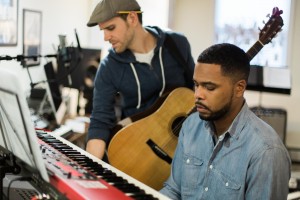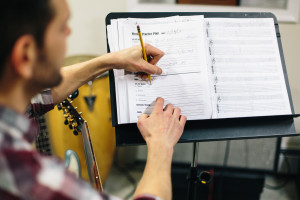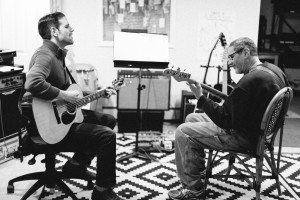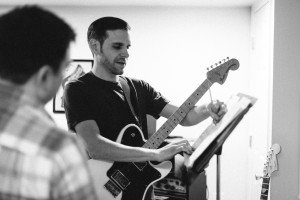High Art
At Middleway Music we are dedicated to teaching popular styles as high art, different but no less important than classical or jazz, while using teaching materials specifically designed for that purpose. This approach is summed up by our teaching motto: Popular Styles, Modern Methods.
Popular Styles
This is what “pop” used to mean, and it’s what Middleway is all about. For most of us it’s the music we grew up with, and the music we love most: blues, gospel, R&B, soul, country, bluegrass, folk, rock, reggae, funk, hip-hop, and everything in between. These are the styles that form the core of the Middleway curriculum. If jazz and classical are “serious” music, then to us, “popular styles” simply means everything else.
Modern Methods
All of these styles are distinctly modern creations, and they should be learned and taught in distinctly modern ways. This is the guiding principle of the Middleway Method, and the key to building confidence and proficiency in the shortest possible amount of time. Our method celebrates the simplicity, power, and broad appeal of popular music, preserving only the most relevant aspects of classical theory, while discarding or revising the rest to suit the needs and goals of our students.
Recreational Musicians
So much of what is indispensible to professional musicians—advanced technique, sight-reading, music theory— is unimportant or even counterproductive for casual musicians, and can very quickly lead to boredom, frustration, and burn-out. Though you never know who might go pro (especially in pop music), the Middleway Method is specifically tailored to the needs of recreational musicians. By making this distinction explicit, and applying it from day one, our teachers are able to craft their lessons with an eye to maximum impact, relevance, and inspiration.
Reading Music
It is a well-known fact that most pop music greats don’t read or write music, and so our students don’t have to either. No Middleway students are required to learn traditional notation. For our guitar and bass students, the ability to read tablature, chord charts, and basic rhythms is more than enough for even the most difficult pieces. For piano students, charts, rhythms and good listening skills are also sufficient, although traditional notation is occasionally valuable too (partly because it is much easier to learn to read on the piano, and partly because there are fewer effective alternatives).
Music Theory
Music theory is generally used to explain great music, not perform it. Therefore the choice of how much or little to include depends squarely on the individual student—their needs, goals and interests. We don’t require that even basic music theory be taught to everyone as a matter of course, and certainly not in a rigid or systemic way. Instead, whenever it is requested, a practical, relevant, living music theory is our goal, based closely on the actual practice of pop music—it’s history, repertoire, and major artists.
A Beautiful Synergy
When taken together, the main components outlined here—popular styles, modern methods, recreational performance—lead to a beautiful synergy that underlies the success of the Middleway Method: popular styles and recreational music education are the perfect pair. Simple song structures, basic chord progressions, short, memorable melodies, riffs and hooks—these things make pop music extremely accessible to aspiring musicians. They set the technical bar at a modest level, and invite all of us—beginner, intermediate, young, old—to join in the fun, make music a part of our lives, and passionately pursue our performance dreams.
“Simplicity is the ultimate sophistication.
– LEONARDO DA VINCI




